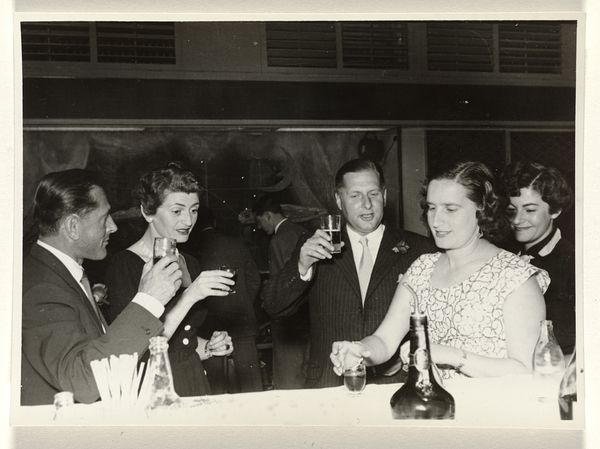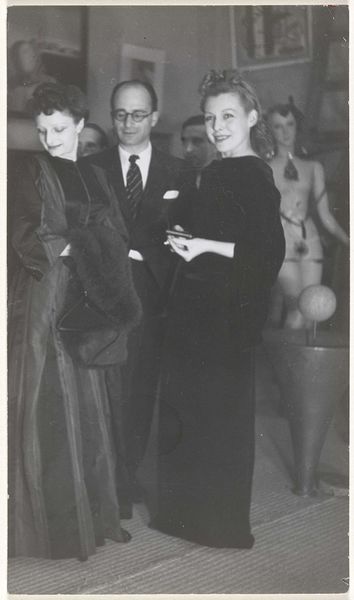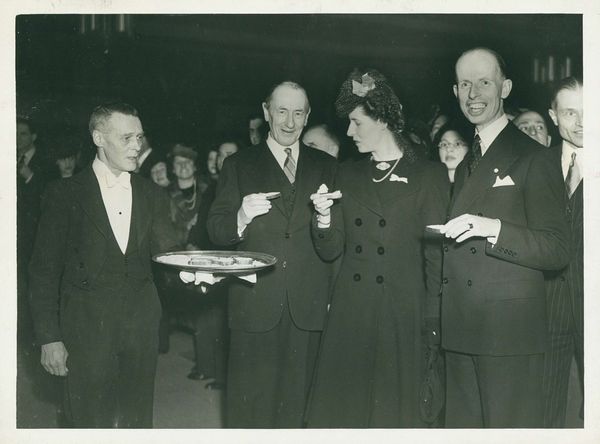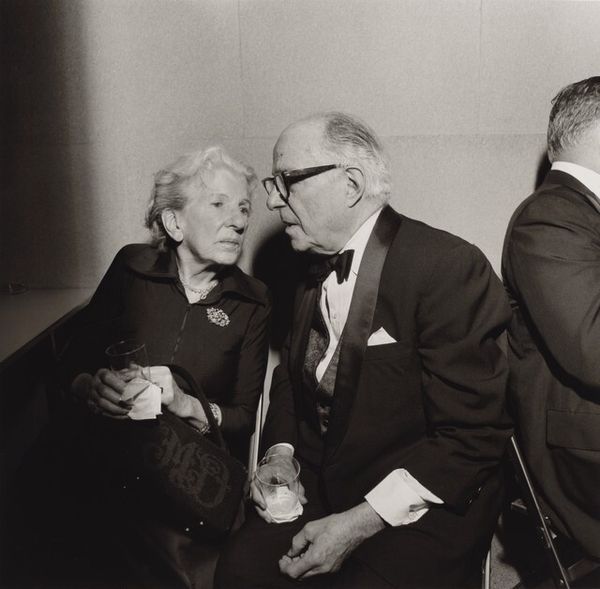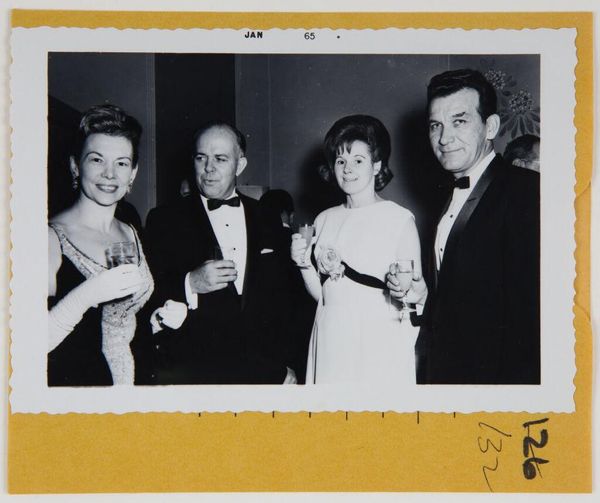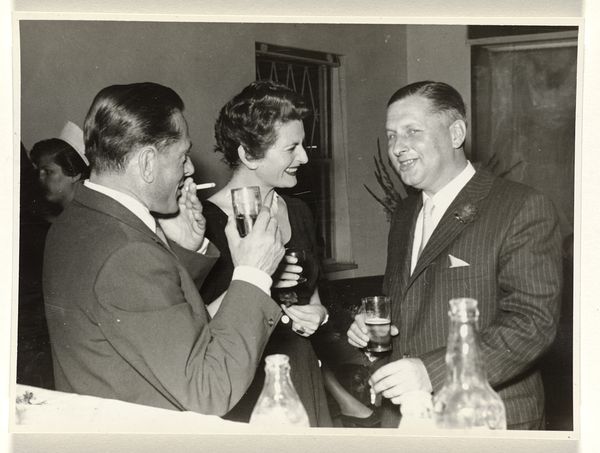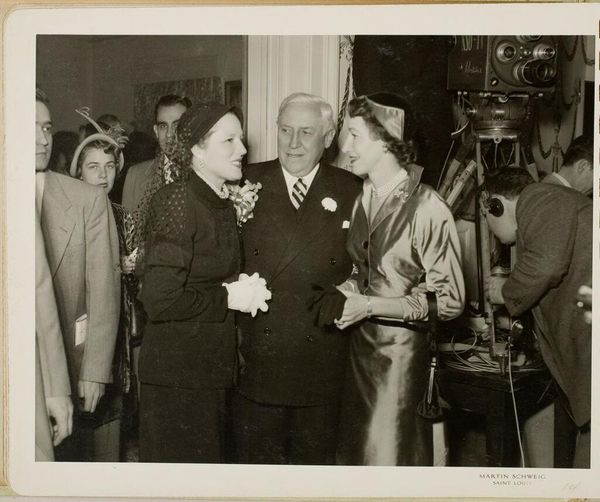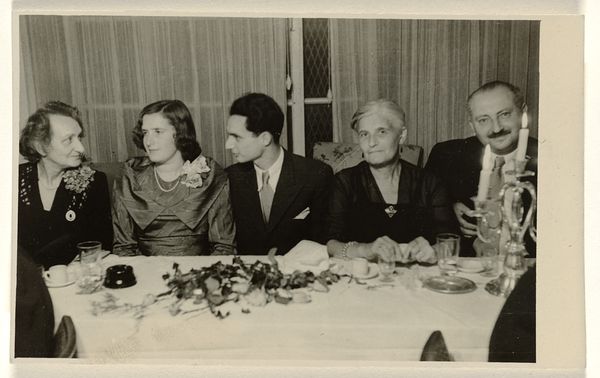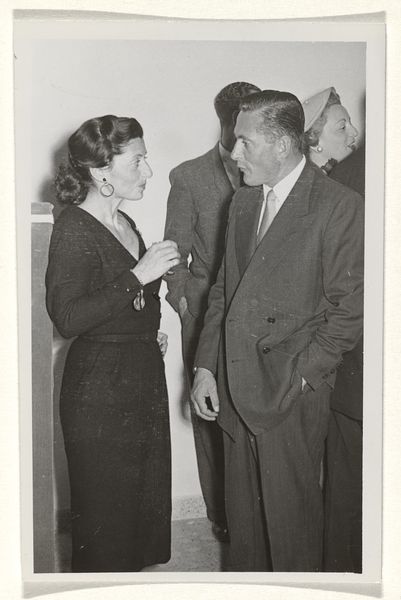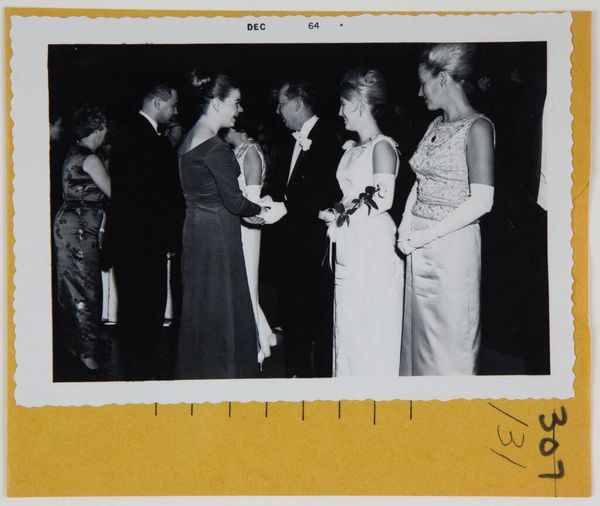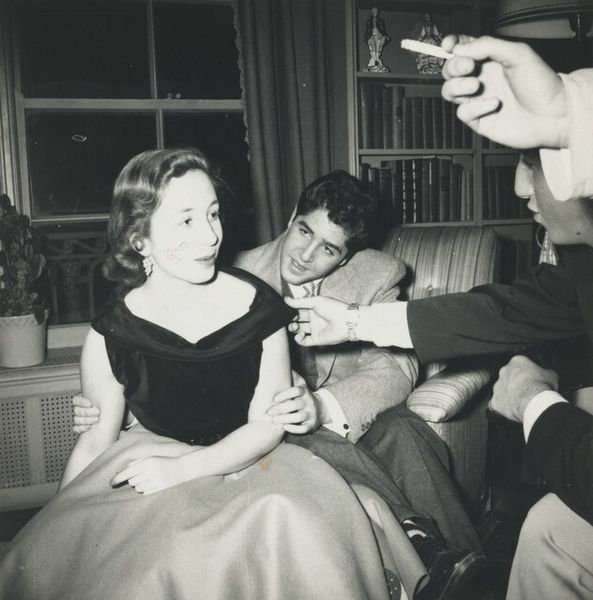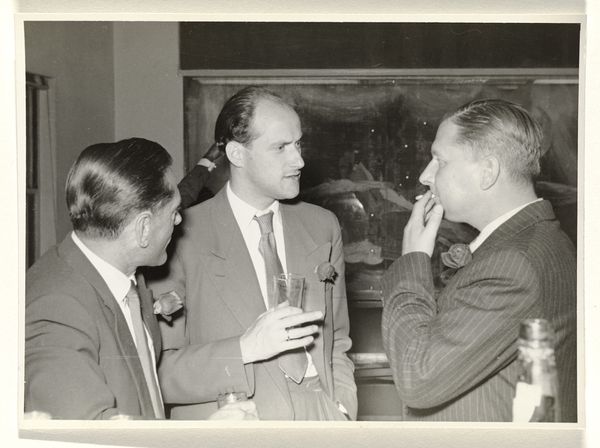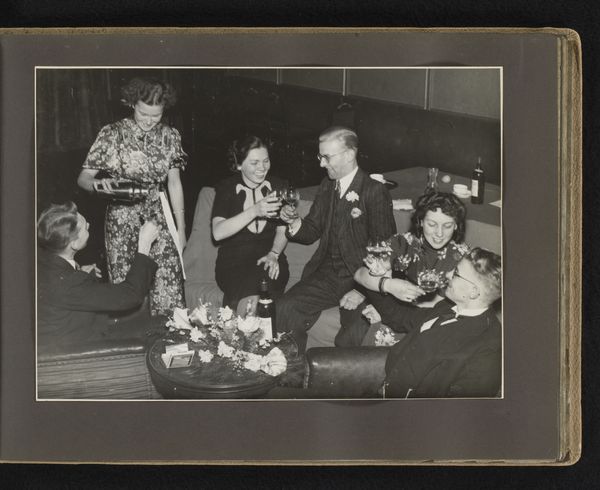
Maid of Cotton Award: Karen Stark, Mrs. Richard M. Nixon, Vice President Nixon and Harvey Berin 28 - 1954
0:00
0:00
print, photography
#
portrait
#
still-life-photography
# print
#
archive photography
#
photography
#
historical photography
#
history-painting
Dimensions: image/sheet: 28.26 × 35.56 cm (11 1/8 × 14 in.)
Copyright: National Gallery of Art: CC0 1.0
Editor: Here we have a photograph titled "Maid of Cotton Award: Karen Stark, Mrs. Richard M. Nixon, Vice President Nixon and Harvey Berin," dated January 28, 1954. It feels like a carefully staged moment. What strikes you about this image? Curator: Immediately, I’m drawn to the power dynamics at play here. This isn’t just a photo; it’s a carefully constructed narrative of American aspiration and the intersection of politics, fashion, and gender roles during the height of the Cold War. Look at the women—adorned in pearls and carefully styled dresses, emblems of feminine propriety of the time—framed as recipients of attention mediated by the men at the center. What’s your read of their gaze? Editor: I see what you mean about their gaze. It feels almost… performed? Like they’re aware of the cameras and adhering to a specific script. Curator: Exactly! And that “script” is what interests me. Consider the socio-political climate. Cotton, at that time, represented a complex legacy—a Southern industry built on the exploitation of enslaved labor, now rebranded as a symbol of American ingenuity and purity through events like the “Maid of Cotton” pageant. This image promotes this cleaned up vision of American industry. Editor: So the photo isn't just a celebration; it's promoting a particular ideology? Curator: Precisely. This photo normalizes particular power structures around race, gender, and capital that remain woven into the fabric of American culture, even now. Doesn't the composition—the way the figures are positioned and the central placement of the documents they are scrutinizing—lend itself to reinforcing those very structures? Editor: I hadn’t considered that before. I was focused on the individual figures, but now I see the photograph working to reinforce a certain image of America at that time. It is not as innocent as I had first thought. Curator: It's crucial to unpack the layers of representation, especially in seemingly benign archival material. Editor: Thanks, I learned that images always have implicit biases.
Comments
No comments
Be the first to comment and join the conversation on the ultimate creative platform.
